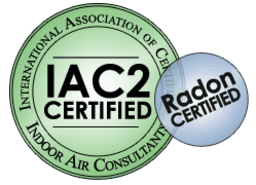Radon is a colorless, tasteless and odorless radioactive gas caused by decaying uranium. It occurs naturally in soil and water all over the planet and can enter your home through cracks in the walls or floors, construction joints, gaps around pipes, and even through the water itself.
Overexposure can cause a variety of health problems, including lung cancer. In fact, radon is the leading cause of lung cancer among non-smokers, and increases the lung cancer risk for smokers considerably. Children, the elderly and those with compromised immune systems are even more vulnerable to radon.
In 1988 the U.S. Surgeon General issued a formal warning about the dangers of radon and recommended that every home be tested. Do not leave your family vulnerable to this invisible killer.
What Does Radon Testing Entail?
To get a truly accurate picture of your home’s radon levels, professional testing is essential. Home test kits are less precise and subject to contamination and other issues. Short-term tests are also less reliable than longer-term tests. Allegiance will place professional-grade test canisters in the home and leave them there for at least 48 hours. The canisters will then be collected and sent to a lab for analysis.
What if the Results are Too High?
There are several methods to reduce a home’s radon levels. The most popular is a vent pipe, which helps to draw radon from below the house to the outside air. You can also seal the foundation, floors and crawlspaces to eliminate any cracks that radon may seep through.




